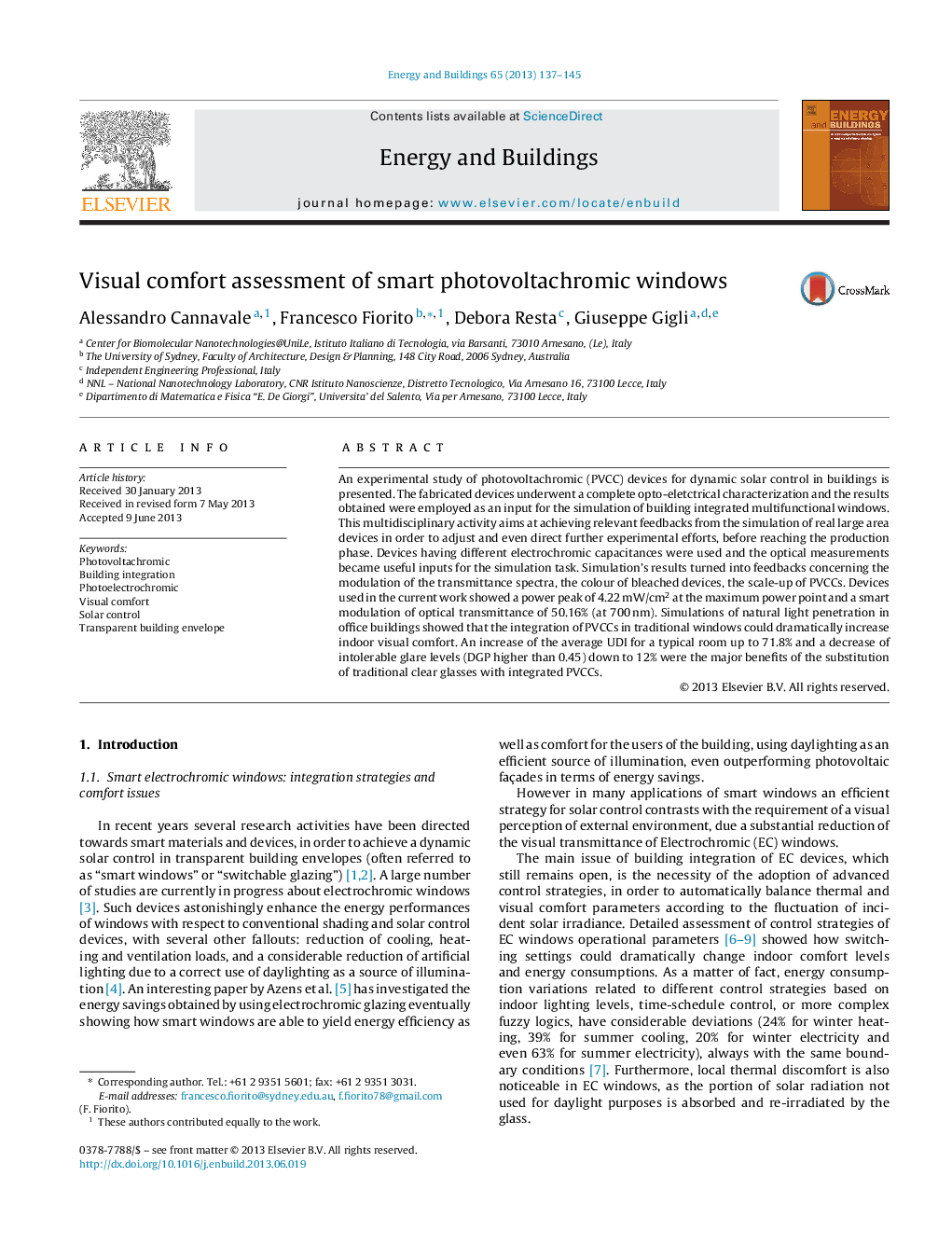| Article ID | Journal | Published Year | Pages | File Type |
|---|---|---|---|---|
| 263198 | Energy and Buildings | 2013 | 9 Pages |
•We studied the integration of new PVCC devices in transparent building components.•Indoor visual comfort simulations have been used as feedback for PVCC design.•An effective optimization of optical transmittance modulation has been achieved.•Increase of indoor visual comfort levels have been obtained through integrated PVCC.•Further experiments needed in order to increase PVCC transmittance modulation.
An experimental study of photovoltachromic (PVCC) devices for dynamic solar control in buildings is presented. The fabricated devices underwent a complete opto-eletctrical characterization and the results obtained were employed as an input for the simulation of building integrated multifunctional windows. This multidisciplinary activity aims at achieving relevant feedbacks from the simulation of real large area devices in order to adjust and even direct further experimental efforts, before reaching the production phase. Devices having different electrochromic capacitances were used and the optical measurements became useful inputs for the simulation task. Simulation's results turned into feedbacks concerning the modulation of the transmittance spectra, the colour of bleached devices, the scale-up of PVCCs. Devices used in the current work showed a power peak of 4.22 mW/cm2 at the maximum power point and a smart modulation of optical transmittance of 50.16% (at 700 nm). Simulations of natural light penetration in office buildings showed that the integration of PVCCs in traditional windows could dramatically increase indoor visual comfort. An increase of the average UDI for a typical room up to 71.8% and a decrease of intolerable glare levels (DGP higher than 0.45) down to 12% were the major benefits of the substitution of traditional clear glasses with integrated PVCCs.
